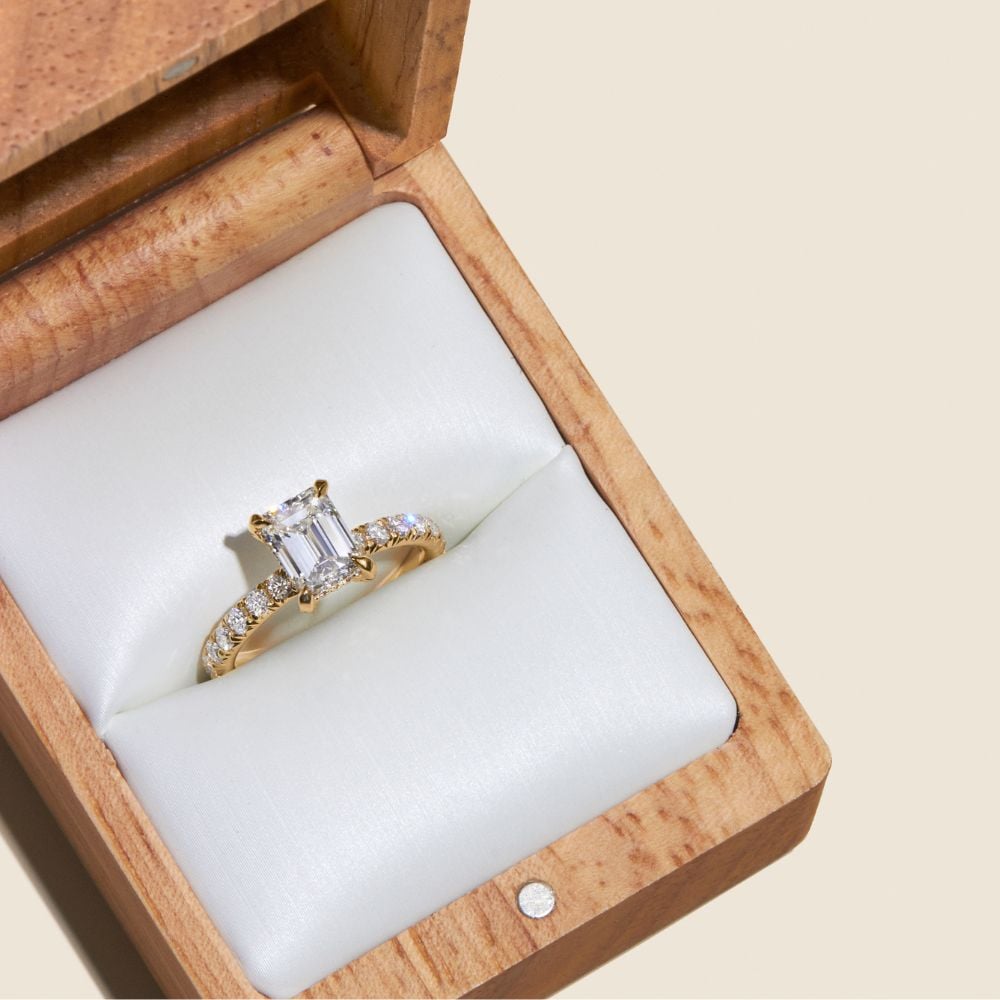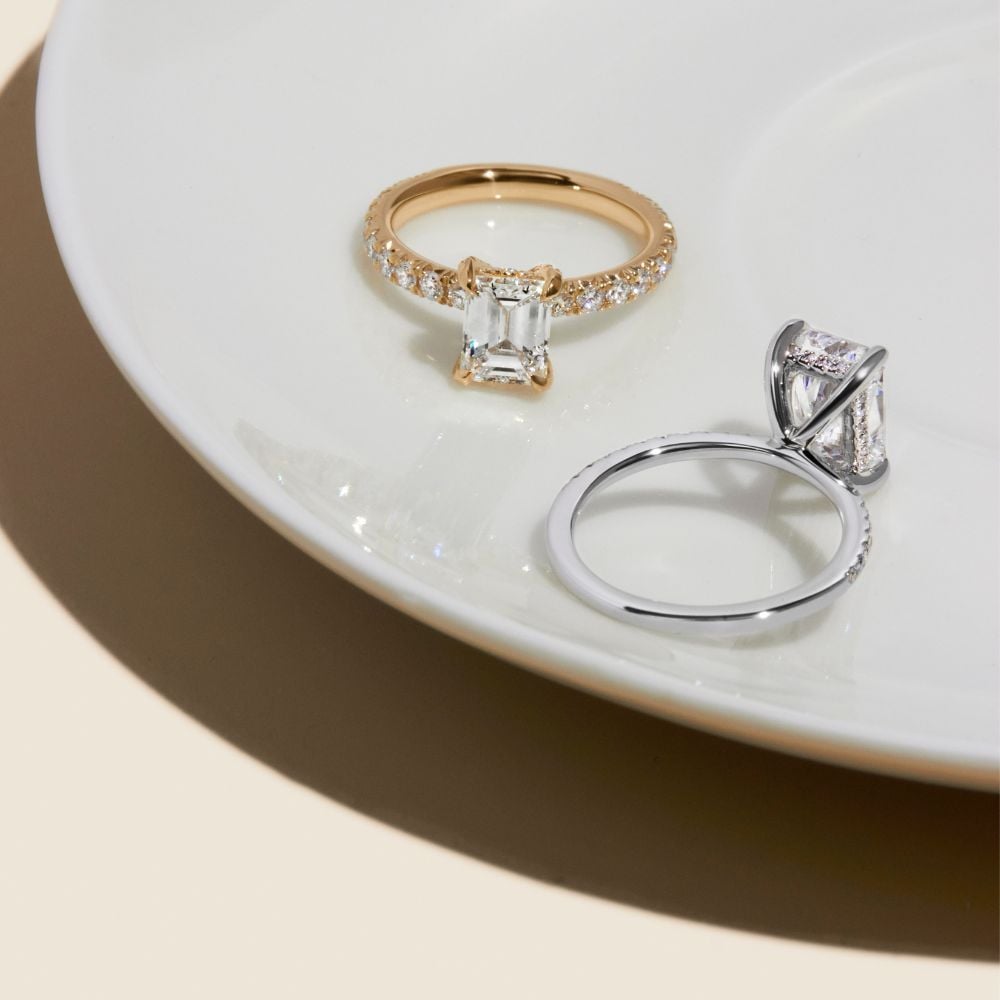
Insuring an engagement ring is a smart way to protect its value. By learning how ring insurance works and what it costs, you can make a good choice to keep it safe. This guide will explain how ring insurance works, how to get it, and what it might cost, as well as answer other common questions.
Should I insure my engagement ring?
Yes. Insuring your engagement ring provides protection in the event of loss, theft, or damage. Insurance for engagement rings is particularly advisable if:
- The ring is of high monetary or sentimental value.
- You have a lifestyle that puts the ring at higher risk (e.g., frequent travel, active lifestyle).
- You want to make sure the ring is protected against unforeseen circumstances.

How to Insure a Ring
Here are common steps to insuring an engagement ring:
- Get the Ring Appraised: Jewelers typically provide a digital grading report or diamond certificate upon delivery of an engagement ring or loose diamond. Many also provide appraisals at the same time, and if they don’t, you can use the report or certification to get your ring appraised at another jeweler.
- Research Insurance Providers: Look into companies specializing in jewelry insurance, such as Lavalier for US-based customers, or consider adding it to your existing homeowner’s or renter’s insurance.
- Compare Policies: Evaluate the coverage options, including what is covered (e.g., loss, theft, damage) and any exclusions. Pay attention to deductible amounts and claim procedures.
- Select a Policy: Choose the policy that offers the best coverage for your needs and make sure you understand all terms and conditions.
- Purchase the Policy: Complete the necessary paperwork and pay the premium to activate the coverage.
How much is engagement ring insurance?
The cost of engagement ring insurance varies based on several factors:
- Value of the Ring: Higher value rings incur higher premiums.
- Location: Premiums may vary based on geographic location and associated risk factors.
- Policy Type: Standalone jewelry insurance might have different rates compared to adding it onto homeowner’s or renter’s insurance.
- Deductible: Policies with lower deductibles generally have higher premiums.
On average, the cost of insuring an engagement ring is approximately 1-2% of the ring’s appraised value annually. For instance, a $10,000 ring might cost $100-$200 per year to insure.

Tips to Help You Get the Best Engagement Ring Insurance
- Ask important questions to understand your insurance policy.
- Can you choose who repairs your ring?
- If you need a replacement, where can you buy a new ring?
- What happens if they can’t find a suitable replacement?
- How do you prove the ring was lost if you make a claim?
- Are there any exclusions in the coverage?
- Does the insurance cover you when you’re out of the country?
- Does it cover damage, loss, and theft?
- Will the policy adjust for inflation?
- What repairs count towards the deductible?
- Insure the ring as soon as you have it. Usually, coverage starts after you submit the application, appraisal, and sales receipts. It might take a few days if further review is needed.
- Choose a reputable appraiser with a graduate degree in gemology. Consider getting a second opinion to ensure the appraisal value is accurate.
Is engagement ring insurance worth it?
Engagement ring insurance is often considered worth the investment due to the protection it offers. Here are some reasons why it might be beneficial:
- Peace of Mind: Knowing your ring is protected against various risks can reduce stress and anxiety.
- Financial Protection: In the event of loss, theft, or damage, insurance helps mitigate financial loss by covering repair or replacement costs.
- Preserving Sentimental Value: Engagement rings often hold significant sentimental value, and insurance ensures you can restore or replace this cherished item if something happens to it.
Considering the relatively low cost of insurance compared to the potential loss, many find that engagement ring insurance provides valuable security.




